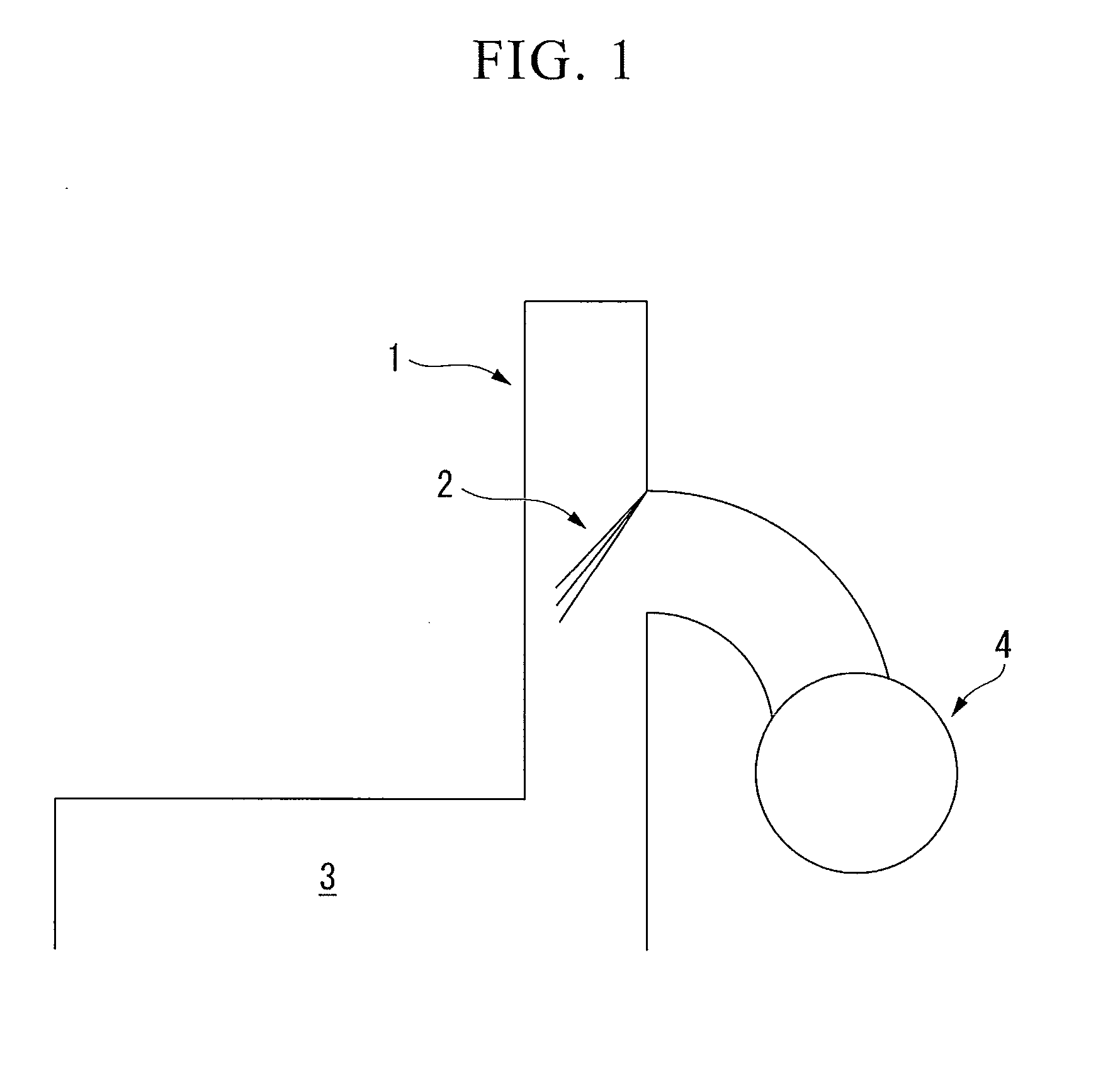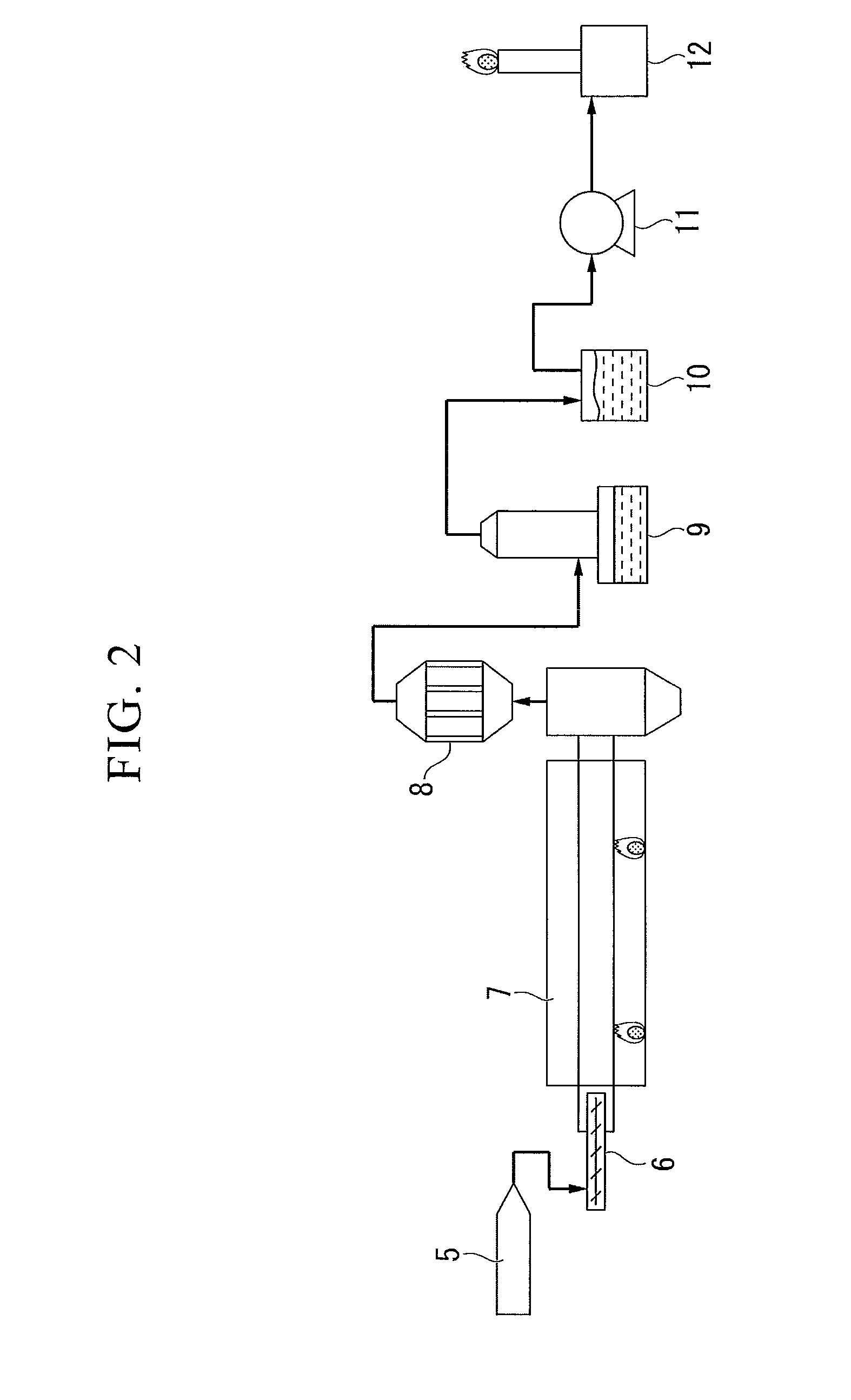Catalyst for reforming tar-containing gas, method for preparing catalyst for reforming tar containing gas, method for reforming tar-containing gas using catalyst for reforming tar-containing gas, and method for regenerating catalyst for reforming tar-containing gas
a technology of tar-containing gas and catalyst, which is applied in the direction of metal/metal-oxide/metal-hydroxide catalyst, catalyst, and combustible gas purification/modification, etc. it can solve the problems of tar-containing gas decomposition product decomposition product not considering at all whether or not it becomes light hydrocarbon, heat transfer efficiency deterioration over time, and inability to consider the decomposition product of heavy hydrocarbons such as tar
- Summary
- Abstract
- Description
- Claims
- Application Information
AI Technical Summary
Benefits of technology
Problems solved by technology
Method used
Image
Examples
first embodiment
Catalyst for Reforming Tar-Containing Gas
[0066]The catalyst for reforming a tar-containing gas according to a first embodiment of the present invention is an oxide which contains nickel, magnesium, cerium and aluminum. The catalyst for reforming a tar-containing gas contains at least one composite oxide (that is, composed of one or more composite oxides, or a mixture of a composite oxide and a simple metal oxide), and contains 5% by mass or less of alumina (alumina phase) as a simple compound.
[0067]The nickel serves as a main active component which performs a reforming reaction between heavy hydrocarbons, and water vapor, hydrogen or carbon dioxide present in a gas or incorporated from the outside. In a case where a high concentration of hydrogen sulfide is contained in the tar-containing gas, since the nickel metal is finely dispersed in the form of a cluster on the surface of catalyst and thus has an increased surface area, and new active metal particles are finely precipitated fr...
second embodiment
Method for Preparing Catalyst for Reforming Tar-Containing Gas
[0089]Hereinafter, a method for preparing the catalyst for reforming a tar-containing gas according to the second embodiment of the present invention will be described with reference to flow charts shown in FIGS. 3 to 5.
[0090]The second embodiment of the present invention is a method for preparing a catalyst for reforming tar used for reforming the tar-containing gas. The term “catalyst for reforming the tar-containing gas” used herein refers to a metal oxide catalyst which contains nickel, magnesium, cerium and aluminum as constituent metals. This catalyst is prepared as follows.
[0091]First, a precipitate is produced by coprecipitation from a solution of a nickel compound, a magnesium compound and a cerium compound. During this coprecipitation, or after production of precipitates, an aluminum component is added thereto to produce an aluminum mixture containing nickel, magnesium, cerium and aluminum. This aluminum mixture...
third embodiment
Method for Reforming Tar-Containing Gas using the Catalyst for Reforming Tar-Containing Gas
[0107]Next, a method for reforming a tar-containing gas using a catalyst according to a third embodiment of the present invention will be described. In this reforming method, the tar-containing gas is reformed by bringing the tar-containing gas generated when a carbonaceous material is thermally decomposed, in contact with a hydrogen, carbon dioxide and water vapor in the presence of the catalyst, or in the presence of the catalyst after reduction.
[0108]The hydrogen, carbon dioxide and steam described above may be hydrogen, carbon dioxide and steam contained in the tar-containing gas, or hydrogen, carbon dioxide and steam suitably incorporated from the outside.
[0109]Here, although the tar gasification reaction in which tar in the tar-containing gas is gasified by contact reforming includes a complicated reaction path and is thus not certainly clear, a conversion reaction of a condensed polycyc...
PUM
| Property | Measurement | Unit |
|---|---|---|
| size | aaaaa | aaaaa |
| crystallite size | aaaaa | aaaaa |
| size | aaaaa | aaaaa |
Abstract
Description
Claims
Application Information
 Login to View More
Login to View More - R&D
- Intellectual Property
- Life Sciences
- Materials
- Tech Scout
- Unparalleled Data Quality
- Higher Quality Content
- 60% Fewer Hallucinations
Browse by: Latest US Patents, China's latest patents, Technical Efficacy Thesaurus, Application Domain, Technology Topic, Popular Technical Reports.
© 2025 PatSnap. All rights reserved.Legal|Privacy policy|Modern Slavery Act Transparency Statement|Sitemap|About US| Contact US: help@patsnap.com



